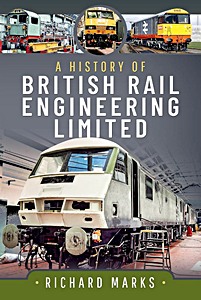Freight Trains of the Western Region in the 1980s
From coal trains in South Wales to clay trains in Cornwall, there were still large numbers of unfitted and vacuum-braked wagons of various types in use across the Western Region at the start of the 1980s.
However changes were taking place, and by 1984 the traditional wagon-load freight network had disappeared, and with it many yards were closed or rationalised. The replacement Speedlink Network conveyed modern air-braked wagons, many of them privately owned. Company block trains also connected freight customers across the Region, hauled by a variety of loco classes.
Between 1980 and 1986 Kevin Redwood was working in the Area Freight Centre at Bristol with a particular interest in freight traffic. On his days off he frequently travelled across the region to photograph the changing scene. His journeys took him to busy mainline locations like Didcot, as well as more obscure locations in South Wales and the West Country.
Specificaties
| Auteur: | Kevin Redwood |
|---|---|
| Uitvoering: | 96 blz, 23.5 x 16.5 x 0.8 cm, paperback |
| Illustraties: | 180 z/w- en kleurenfoto's |
| Uitgever: | Amberley Publishing (GB, 2021) |
| ISBN: | 9781398100503 |

Freight Trains of the Western Region in the 1980s
Taal: Engels
Beschikbaar bij bol.com en Amazon - veilig betalen en snelle levering
Kopen bij bol.comKopen bij Amazon NL
Kopen bij Amazon BE












